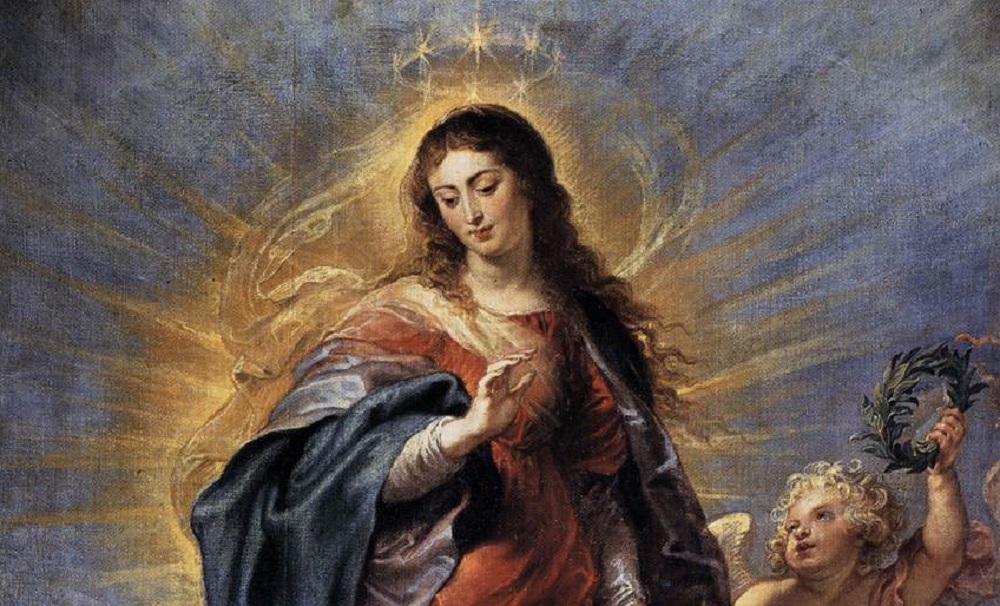When the archangel Gabriel greeted Mary at the Annunciation, he called her “full of grace.” This fullness of grace indicates an absence of sin in Mary. To be “full of grace” means there is no room for anything else in Mary’s soul. A glass that’s full can contain no more water, but if you kept pouring it would overflow.
For Mary to be the Mother of God she needed an overabundance of his free and gratuitous divine assistance to accept her calling. As the Catechism of the Catholic Church states in No. 490: “in order for Mary to be able to give the free assent of her faith to the announcement of her vocation, it was necessary that she be wholly borne by God’s grace.”
Pope Bl. Pius IX proclaimed the Immaculate Conception as a dogma of faith in 1854: “The most Blessed Virgin Mary was, from the first moment of her conception, by a singular grace and privilege of almighty God and by virtue of the merits of Jesus Christ, Savior of the human race, preserved immune from all stain of original sin.”
The Church’s Magisterium proclaims dogmas “in a form obliging the Christian people to an irrevocable adherence of faith, truths contained in divine Revelation or also when it proposes, in a definitive way, truths having a necessary connection with these” (Catechism of the Catholic Church, No. 88). As such, the dogma of the Immaculate Conception is a binding truth of the faith for Catholics.
Here you’ll find more on the definition of the dogma of the Immaculate Conception.
Michael R. Heinlein is editor of Simply Catholic. Follow him on Twitter @HeinleinMichael.

